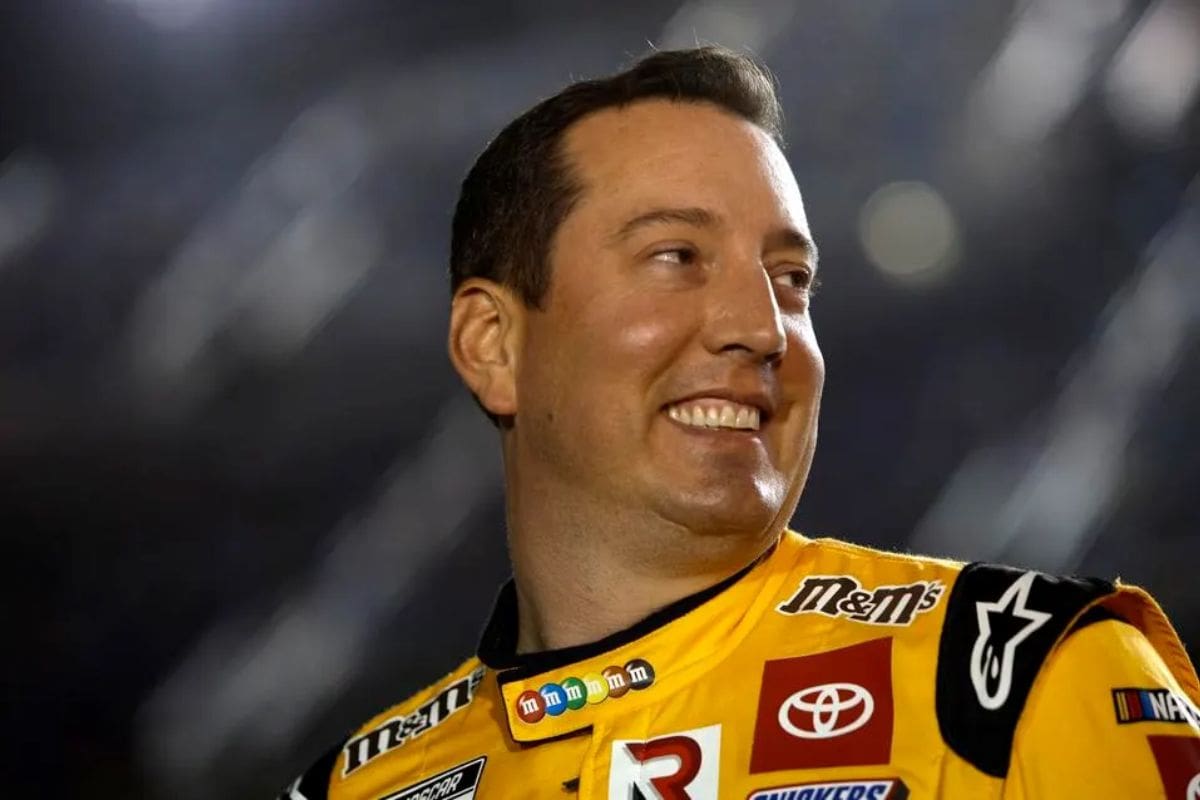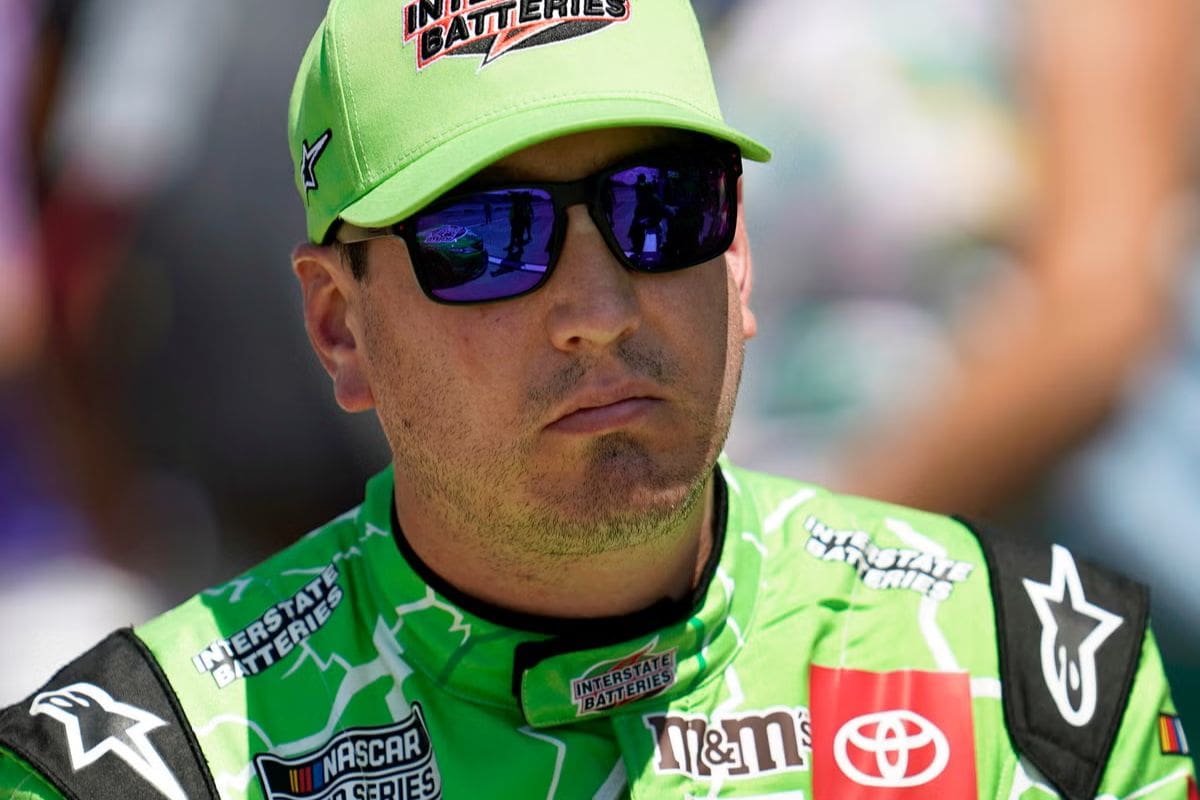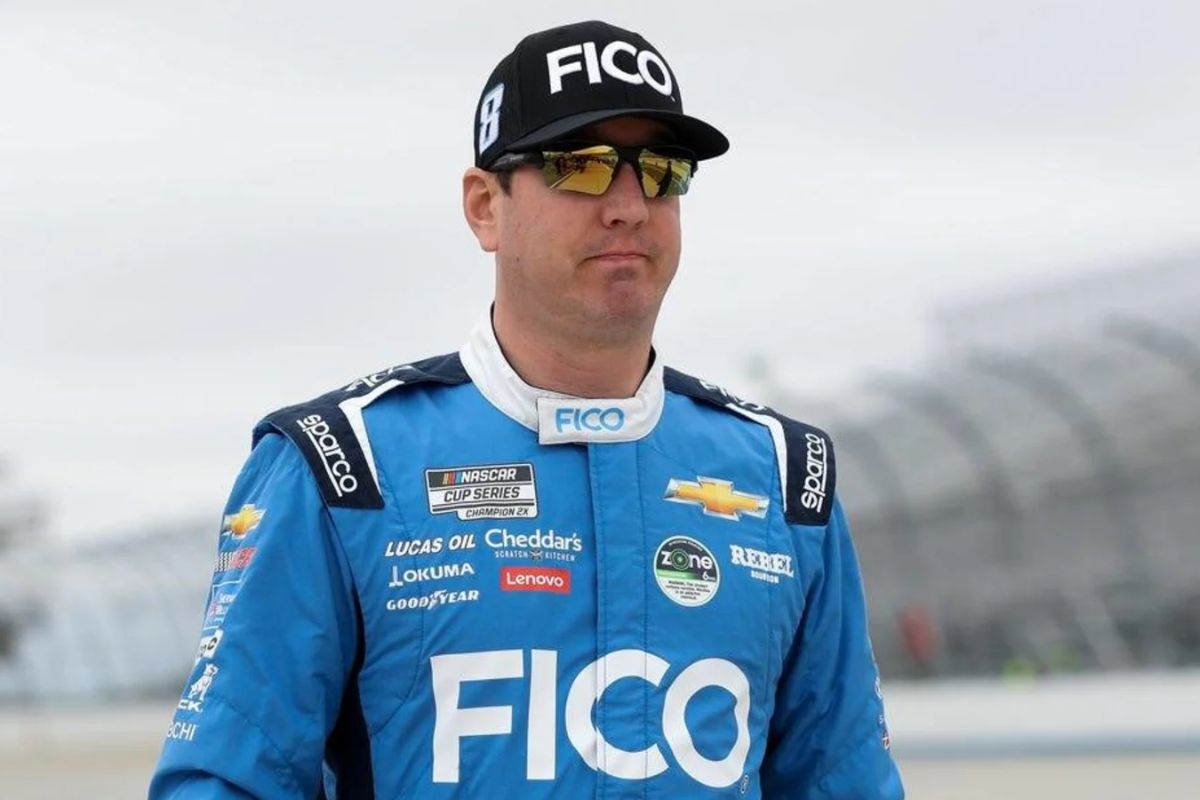Kyle Busch Doubts All-Star Tire Choice: In a recent critique of NASCAR’s tire selection for the All-Star Race, veteran driver Kyle Busch voiced concerns that the options provided mirror those available during regular season races, suggesting a missed opportunity for the sport to experiment with potentially game-changing variables. His comments raise a pivotal question about the balance between tradition and innovation in NASCAR’s approach to competition. By advocating for a strategic overhaul, Busch not only challenges the status quo but also ignites a broader conversation on how the sport could evolve.
Key Takeaways
- Kyle Busch criticizes NASCAR’s All-Star Race tire regulations, seeing no significant departure from regular race strategies.
- He questions the effectiveness of option tires, suggesting they don’t offer a distinct advantage.
- Busch proposes integrating more strategic elements like timed cautions to vary race dynamics.
- He emphasizes the need for strategies that go beyond tire choice to enhance the competitiveness of races.
- Busch advocates for a racing format that incentivizes tactical diversity and strategic planning.
Kyle Busch Skeptical of NASCAR’s Tire Regulations for All-Star Race
Two-time NASCAR Cup Series champion Kyle Busch has openly expressed his skepticism regarding the tire regulations set by NASCAR for the forthcoming All-Star race at North Wilkesboro oval track. Busch’s concerns highlight a deeper issue potentially affecting the race’s competitiveness and strategic diversity. His critique points to a broader ambiguity in NASCAR’s approach to tire regulation, which could influence both the performance of the vehicles and the general race dynamics.
Kyle Busch, known for his outspoken nature and deep understanding of racecraft, questions the rationale behind the significance in tire choices. His skepticism is rooted in his experience and analytical approach to racing, where tire selection plays a critical role in handling and speed. The implications of his doubts extend beyond personal inconvenience, suggesting possible impacts on the race outcome due to uniform tire behavior across varied driving styles and vehicle setups.
This issue resonates with drivers and teams who may feel that strategic elements of racing, such as tire wear management and pit stop timing, could be oversimplified, or worse, neutralized. Consequently, it raises concerns about the predictability of the race, potentially diminishing the spectacle that the All-Star race aims to offer.
![]()
NASCAR’s Tire Regulations for the All-Star Race
In a significant update to the NASCAR All-Star Race, organizers have reintroduced an alternate tire choice, offering teams the strategic flexibility of selecting from multiple tire compounds during the race weekend. This change, implemented by NASCAR and Speedway Motorsports for the 2024 event at the 0.625-mile short track, marks a crucial shift in how teams will approach the race, emphasizing not only speed and performance but also strategic decision-making regarding tire management.
The availability of both prime and option tires introduces a layer of complexity and dynamism to the race strategies. Prime tires, typically more durable and consistent over longer stints, offer reliability but at the potential cost of outright speed. On the other hand, the option tires are designed to provide a quicker burst of speed and superior handling but may degrade faster, necessitating more precise timing and usage by the teams.
This dual-tire strategy necessitates a deep understanding of tire behavior and its impact on race performance. Teams must now consider several factors: the anticipated wear and degradation rates of the tires, the track conditions, and the specific demands of the short track, which often accentuates the importance of tire choice due to its tight corners and short straights.
Moreover, the strategic deployment of these tires could potentially lead to varied race tactics, with some teams opting for early aggressive plays using the faster option tires, while others might conserve their prime tires for a strong finish. This reintroduction revitalizes the All-Star Race’s tactical dimensions and intensifies the challenge for drivers and teams.
Kyle Busch’s Concerns
Despite the strategic options presented by the introduction of multiple tire compounds in the NASCAR All-Star Race, Kyle Busch, a seasoned driver for Richard Childress Racing, remains unconvinced about the efficacy of using option tires in the upcoming event. His skepticism stems from previous experiences where simultaneous strategic choices among competitors diluted the anticipated impact of diverse tire strategies.
“The last time we all kind of put it on the same time, there was no difference putting it on. So this time I feel like we’re probably all gonna strategize the same way again.”
“There’s not many different ways you can skin the same cat to figure out how to win these races. It’s no different than every Sunday, right? It’s spelled out. There’s no thinking to it anymore, to strategy.” – Busch
- Consistency in Strategy: Busch predicts that most teams will adopt a comparable strategy regarding when to deploy their option tires, which could nullify any potential advantage that the option is supposed to provide.
- Performance Under Alike Conditions: In past races, when teams chose to use the option tires at the same point, the lack of differentiation in performance led Busch to question whether the special tires offer any real race-day advantage over the standard sets.
- Impact on Race Dynamics: The effectiveness of introducing multiple tire compounds is intended to add a layer of strategic depth to the racing. However, if all teams strategize in a comparable manner, it could lead to a static race dynamic, contrary to the intended outcome.
Busch’s Suggestions for NASCAR Races
Exploring alternative strategies, Kyle Busch proposed creative adjustments to NASCAR’s racing format to amplify unpredictability and excitement in the races. Busch advocates for a system where race dynamics are altered by strategically timed cautions, which could potentially lead to more engaging and strategic races. His suggestion centers on the implementation of a defined lap number at certain tracks, after which a caution would be introduced if none has occurred naturally. This reset in race dynamics would not only challenge the teams’ strategic planning but also enrich viewer engagement by introducing unexpected twists in the race narrative.
“I’ve made the suggestion years ago and they have skipped right over it. Find or make a defined number at some of these race tracks.”
“If it’s 75 laps green, you want to go 75 laps green, and if no caution comes you throw a caution. Then the clock resets and we go 75 again. But there’s no caution in the last 50 or 25 or whatever laps.” -Busch
| Strategy Component | Description | Impact on Races |
|---|---|---|
| Defined Lap Number | A specific number of laps after which a caution is introduced | Increases strategic depth |
| Strategic Caution Timing | Cautions thrown if no natural one occurs within the defined laps | Augments unpredictability |
| No Cautions Near End | Restriction on cautions in the last segments of the race | Preserves climactic endings |
Kyle Busch’s Standpoint on Racing Strategy
Kyle Busch, positioned 13th after 14 races in the 2024 NASCAR Cup Series, advocates for the integration of more strategic elements to counter the predictability often seen in current racing formats. With a seasoned perspective and a vested interest in enhancing the competitive landscape, Busch expresses concerns over the standardization of races which he believes dampens the dynamic nature of motorsports.
“So, that throws some strategy into things. That would definitely throw some more option into these races where it’s all the same man. It’s so cookie cutter that it’s all the same.”- Busch
- Variable Tire Strategies: Implementing more tire options for races could lead to diverse racing tactics, allowing teams to differentiate their approach based on track conditions and wear patterns.
- Adjustable Aerodynamics: By permitting modifications to car aerodynamics during the race, teams could adapt to changing conditions more dynamically, enhancing on-track competition.
- Staggered Points System: Introducing a staggered points system that rewards mid-race achievements could incentivize drivers to push for performance throughout the race, rather than conserving resources solely for a strong finish.
- Enhanced Track Configurations: Altering track configurations mid-season or introducing unexpected track changes could challenge teams to continually adapt their strategies, reducing the predictability of outcomes.
News in Brief: Kyle Busch Doubts All-Star Tire Choice
Kyle Busch’s skepticism towards the tire choices for the All-Star Race highlights a broader concern regarding the stagnation of strategic elements within NASCAR. His critique prompts the governing bodies to reconsider and innovate the regulations that shape race dynamics.
The introduction of genuinely different strategic variables, such as varied tire options, could greatly improve the competitive landscape, ensuring that the sport remains challenging and engaging for participants and spectators alike.
Our Reader’s Queries
Q. Who is Kyle Busch driving for in 2024?
A. In the 2024 NASCAR season, Kyle Busch has slated five appearances in the Truck Series, driving for Spire Motorsports. These races are scheduled at Atlanta Motor Speedway, Las Vegas Motor Speedway, Bristol Motor Speedway, Texas Motor Speedway, and Darlington Raceway.
Q. What year did Kyle Busch win the All Star race?
A. Kyle Busch holds a prominent presence in popular media within the NASCAR sphere. Notably, he graces the cover of NASCAR Kart Racing as one of its featured drivers. Additionally, Busch secured a spot on the cover of NASCAR Heat 2 following his victory in the cover driver competition during the 2017 Monster Energy NASCAR All-Star Race. Furthermore, racing enthusiasts can engage with Busch’s persona as a playable driver in Forza Motorsport 6 through the NASCAR expansion pack.
Q. What car is Kyle Busch driving?
A. As of 2023, Kyle Busch assumes full-time driving duties behind the wheel of the No. 8 Chevrolet Camaro ZL1 for Richard Childress Racing in the NASCAR Cup Series. Additionally, he splits his time, competing part-time in the No. 10 Chevrolet Camaro for Kaulig Racing in the NASCAR Xfinity Series. Furthermore, Busch extends his presence into the NASCAR Craftsman Truck Series, where he races part-time driving the No. [Truck Number].
Q. Who owns Kyle Busch Motorsports?
A. In a Wednesday announcement, Kyle Busch revealed that Spire Motorsports has acquired Kyle Busch Motorsports. This transaction encompasses not only Kyle Busch Motorsports but also Rowdy Manufacturing, along with their shared 77,000-square foot facility located in Mooresville, North Carolina.
ALSO READ: Kyle Busch Blames Spire Motorsports for Darlington Misery, Fans React




